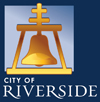Communication networks, such as mobile phones and computers, could be unreliable during disasters, and electricity could be disrupted. Planning in advance will help ensure that all the members of your household - including children and people with disabilities and others with access and functional needs, as well as outside caregivers - know how to reach each other and where to meet up in an emergency. Planning starts with three easy steps:
Download the FEMA Family Communication Plan here
Collect
Create a paper copy of the contact information for your family and other important people/offices, such as medical facilities, doctors, schools, or service providers.
Share
Make sure everyone carries a copy in his or her backpack, purse, or wallet. You should also post a copy in a central location in your home, such as your refrigerator or family bulletin board.
Practice
Have regular household meetings to review and practice your plan.
In a disaster, having a contact outside the area affect will help let people know how you are. Designate a point of contact for your household and make sure everyone (including the contact) knows who to get a hold of after a disaster.
TEXT IS BEST! If you are using a mobile phone, a text message may get through when a phone call will not. This is because a text message requires far less bandwidth than a phone call. Text messages may also save and then send automatically as soon as capacity becomes available.
Learn more at https://www.ready.gov/plan.
